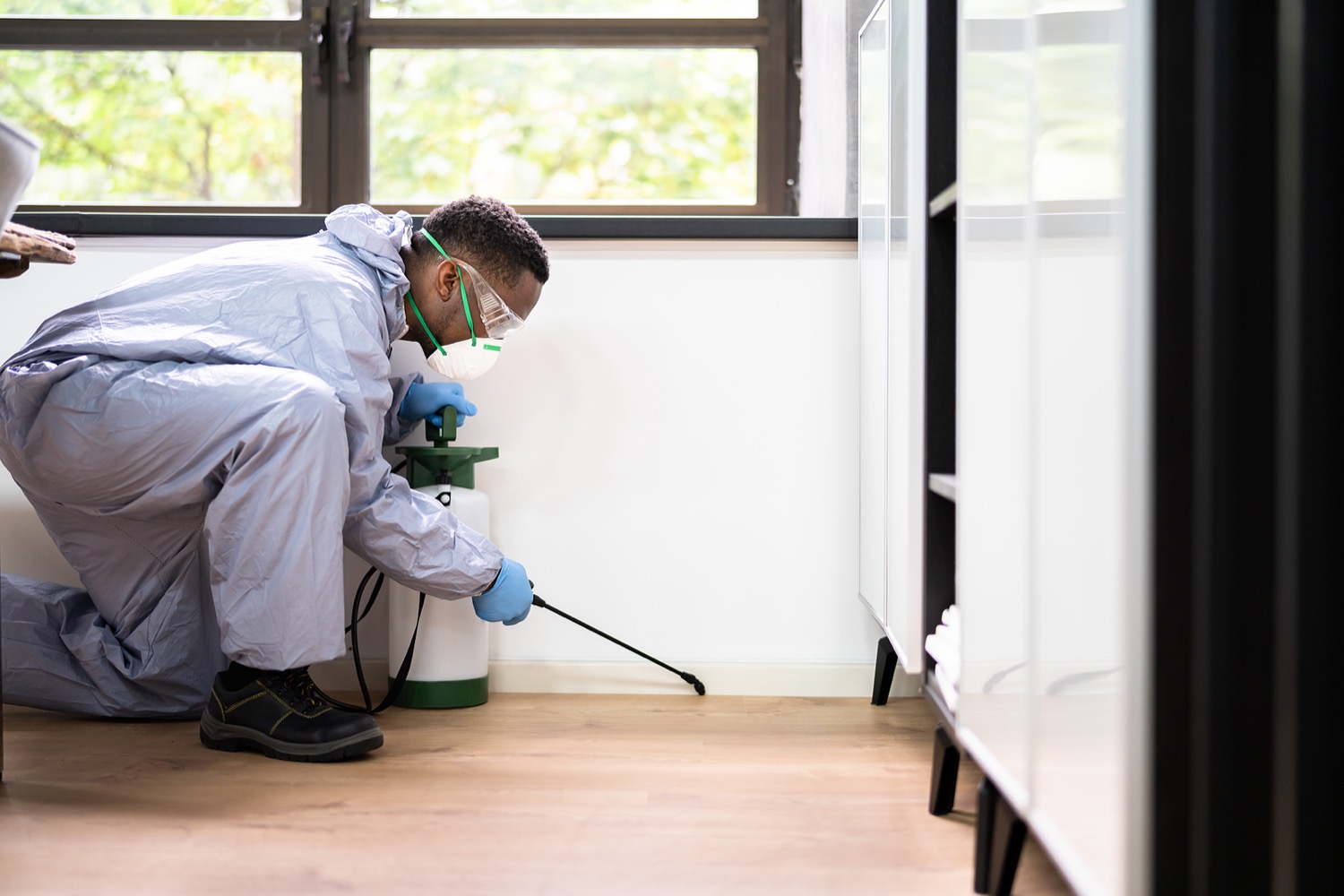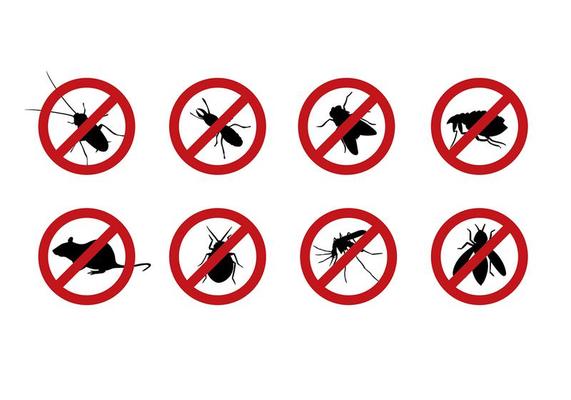Reliable Pest Control Solutions: An Extensive Look at Elimination Techniques and Avoidance Measures
In the realm of parasite control services, the successful administration of problems calls for a precise strategy that combines various strategies and procedures for both removal and avoidance. From Integrated Bug Management (IPM) methods that prioritize lasting remedies to chemical extermination methods made for targeted removal, the collection against pests is vast and multifaceted. Biological control methods and physical avoidance steps provide alternative courses to successfully combating undesirable trespassers. Nonetheless, the key to a comprehensive parasite control strategy exists not just in the techniques themselves, but likewise in the precise expert evaluation treatments that come before and educate them. By recognizing the ins and outs of each method and exactly how they interplay, one can really realize the intricacy and efficiency of modern-day bug control solutions.

Integrated Insect Administration (IPM) Techniques
Integrated Parasite Management (IPM) Methods include a detailed strategy to pest control that concentrates on avoidance, monitoring, and control approaches to effectively manage bug populations. By incorporating numerous methods, IPM aims to minimize the effect of bugs while additionally minimizing the dependence on chemical pesticides. Avoidance lies at the core of IPM, stressing techniques like proper cleanliness, upkeep of health, and sealing access indicate discourage parasites from infesting buildings. Surveillance plays a vital function in IPM by regularly recognizing and checking bug levels to identify the proper treatment thresholds. Control techniques in IPM prioritize the usage of physical, organic, and social methods prior to turning to chemical therapies as a last hope. These approaches consist of introducing all-natural killers, environment alteration, and employing trapping gadgets to maintain parasite populaces in check. On the whole, IPM cultivates a ecologically mindful and sustainable technique to pest administration, advertising lasting solutions that secure both human wellness and the community.
Chemical Extermination Techniques
Chemical elimination methods are commonly used in insect control solutions to successfully eliminate insect populations that pose a threat to human health and building. These techniques entail making use of numerous chemical substances specifically created to target and eliminate bugs such as insects, rats, and other unwanted animals. The application of pesticides, pesticides, rodenticides, and other chemical representatives is thoroughly managed to ensure maximum performance while minimizing risks to humans, pet dogs, and the setting.
One of the crucial benefits of chemical extermination strategies is their ability to offer quick and targeted results, making them specifically helpful in situations of extreme infestations or immediate parasite control needs - a1 pest control in portland oregon bed bugs. Nonetheless, it is necessary to highlight the relevance of proper handling, application, and disposal of these chemical items to avoid unintended damage
Moreover, incorporated bug monitoring (IPM) methods commonly incorporate chemical elimination strategies with various other methods such as sanitation, environment alteration, and organic controls to develop a thorough and lasting insect control strategy. By including chemical elimination strategies deliberately within an IPM structure, bug control solutions can effectively take care of parasite populaces while lessening prospective dangers to human health and wellness and the setting.
Biological Insect Control Methods
Employing all-natural killers and bloodsuckers to handle insect populations is a lasting technique understood as biological pest control. This approach harnesses the all-natural devices of the ecological community to control insect populaces without depending on synthetic chemicals. One usual biological control method entails introducing all-natural adversaries of the target parasite types, such as ladybugs for aphid control or nematodes for termite infestations. These all-natural predators prey on the bugs, assisting to keep their populations in check.
Another efficient organic control strategy is using microbial insecticides. These are naturally occurring bacteria, such as viruses, fungis, and microorganisms, that particularly target and contaminate particular insect varieties. By making use of these microbial agents, insect populations can be effectively decreased without causing or hurting valuable microorganisms harm to the atmosphere.
Physical Bug Avoidance Measures
Implementing physical parasite avoidance steps entails using barriers and architectural modifications to hinder bugs from entering check here or infesting a home. Installing door moves, screens on windows, and securing cracks in the structure can assist prevent bugs like insects and rats from gaining gain access to inside.
One more physical avoidance procedure is the usage of barriers like fencing to keep larger pests such as raccoons or deer away from the residential property. By read this post here applying these physical pest avoidance steps, building owners can considerably decrease the risk of insect infestations and the damages they can trigger.
Expert Pest Inspection Treatments
Carrying out extensive and systematic bug evaluations is a fundamental facet of professional parasite administration procedures. Professional parasite examiners are educated to thoroughly analyze residential properties for signs of invasions, determining pest varieties, entrance factors, and conducive problems. The assessment process normally starts with a detailed assessment of both the exterior and interior of the premises. This includes monitoring for insect droppings, chomp marks, nests, and any type of architectural damage that might show bug activity. In addition, examiners may utilize specialized tools such as wetness meters and borescopes to spot concealed problems within wall surfaces or crawl areas.

Verdict
Finally, reliable Web Site parasite control services utilize a variety of methods, consisting of Integrated Pest Administration approaches, chemical extermination techniques, organic controls, and physical avoidance steps. Specialist parasite evaluation procedures play a critical role in determining and resolving pest concerns in a timely manner. By executing a mix of these approaches, homeowner can efficiently manage and avoid insect invasions.
From Integrated Bug Administration (IPM) techniques that prioritize sustainable services to chemical extermination techniques designed for targeted removal, the collection versus pests is multifaceted and vast.Integrated Pest Management (IPM) Approaches incorporate a thorough approach to pest control that focuses on prevention, control, and monitoring methods to efficiently manage parasite populaces.Chemical extermination strategies are typically employed in pest control solutions to successfully get rid of insect populaces that present a risk to human health and residential or commercial property.Utilizing natural killers and parasites to take care of insect populaces is a sustainable method recognized as biological parasite control.In final thought, effective bug control services use a selection of methods, consisting of Integrated Insect Monitoring techniques, chemical elimination techniques, organic controls, and physical prevention measures.